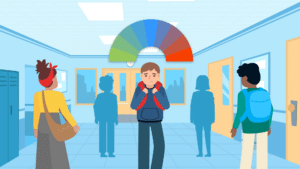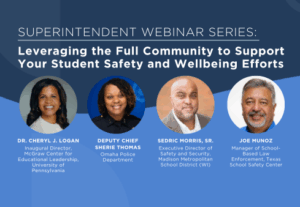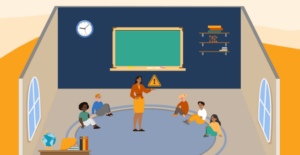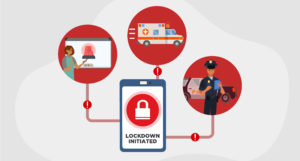Listen to this blog
4 minutes
By: Dr. Amy Grosso, Director Resident Expert at Raptor Technologies
The education landscape is always evolving, necessitating a deep understanding from educators about how to support student wellbeing effectively. With best practices and resources changing, it’s crucial for educators to stay informed amidst their diverse responsibilities. To meet this challenge, we’ve updated our student wellbeing guide. This guide offers educators a comprehensive resource, grounded in research, that includes the latest best practices.
This guide provides educators with research-based strategies that incorporates best practices and a holistic approach to student wellbeing, acknowledging that it extends beyond mere statistics and resources.
Here’s what the new edition includes:
Chapter One: The State of Student Wellbeing
We explore the spectrum of student wellbeing, highlighting the critical importance of early identification of issues to prevent them from developing into crises. Our focus includes:
- Presenting statistics on prevalent student wellbeing issues to underscore the importance of support.
- Discussing the significance and benefits of detecting problems early to avert escalation.
- Documenting frequent concerns relating to student wellbeing, emphasizing the urgent need for support.
Chapter Two: Understanding Student Behaviors
“We know kids who get to that threat assessment level don’t tend to just vault all the way up there. That’s why we wanted StudentSafe. There are precursory things that happen in their life that script out some of that path. We really have a long-term vision and goal for StudentSafe: to support student wellbeing with data so we can intercede with interventions and support services with our goal being to prevent a child from ever exhibiting behaviors that result in a threat assessment.” Mike Matthews, Director of Operations at Fairview Park City Schools, Ohio
Instead of hastily labeling student behavior as ‘bad,’ we explore the underlying causes behind it. By understanding the root of misbehavior, we can address issues more effectively.
This chapter emphasizes the critical nature of interpreting student behaviors as a form of communication. It advocates for the early identification of concerning behaviors to prevent escalation into crisis situations.
Chapter Three: Best Practices for Student Wellbeing Policy
“StudentSafe is a tremendous asset. I’ve been doing threat assessment for about seven years. For me, three key benefits of Raptor StudentSafe is that the organization of the app itself completely walks you through the process, it gives you the ability to collect all that data and analyze it easily, and the ability to collaborate with each other is built in really well. If you want a great organizational tool to keep all your threat assessment information, StudentSafe is pretty complete.” David Wrzesinski, Director of Safe Schools at Robinson ISD, TX
While districts and schools may have policies in place, we provide actionable guidelines to ensure these policies translate into meaningful practices. Our chapter includes a practical checklist to aid in policy implementation. It also outlines essential components of effective wellbeing policies that address prevention, support, crisis management, and postvention.
Chapter Four: Technology’s Role in Student Wellbeing
Technology can be a powerful tool in promoting student wellbeing, but only if chosen wisely. We discuss the importance of selecting technology that aligns with wellbeing goals and offer insights into navigating this landscape effectively.
Technology is a vital tool in enhancing collaboration among staff and ensuring adherence to established wellbeing protocols. The benefits of utilizing student wellbeing management technology include streamlined processes, efficient data tracking, and facilitated support for counselors. This enables timely interventions for students in need.
Chapter Five: Resources
In addition to the guide’s insights, we provide a curated list of resources for educators seeking further exploration in specific areas of student wellbeing.
This chapter categorizes resources into three main areas: Behavioral Threat Assessment, Suicide Prevention, and Other Student Wellbeing Resources, making it an invaluable tool for educators, counselors, and school administrators.
Learn strategies to improve student wellbeing
By equipping educators with this updated guide, we aim to empower them to foster environments where students can thrive emotionally, academically, and socially. Together, let’s navigate the complexities of student wellbeing with knowledge, compassion, and actionable strategies.
Related Resources
Download Raptor’s free, newly-revised Guide to K-12 Student Wellbeing here.

Listen to this blog
4 minutes





